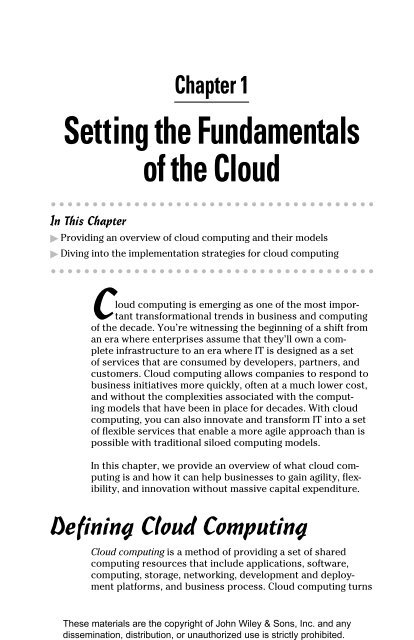u3Zgz
u3Zgz
u3Zgz
You also want an ePaper? Increase the reach of your titles
YUMPU automatically turns print PDFs into web optimized ePapers that Google loves.
These materials are the copyright of John Wiley & Sons, Inc. and any<br />
dissemination, distribution, or unauthorized use is strictly prohibited.<br />
Chapter 1<br />
Setting the Fundamentals<br />
of the Cloud<br />
In This Chapter<br />
▶ Providing an overview of cloud computing and their models<br />
▶ Diving into the implementation strategies for cloud computing<br />
Cloud computing is emerging as one of the most important<br />
transformational trends in business and computing<br />
of the decade. You’re witnessing the beginning of a shift from<br />
an era where enterprises assume that they’ll own a complete<br />
infrastructure to an era where IT is designed as a set<br />
of services that are consumed by developers, partners, and<br />
customers. Cloud computing allows companies to respond to<br />
business initiatives more quickly, often at a much lower cost,<br />
and without the complexities associated with the computing<br />
models that have been in place for decades. With cloud<br />
computing, you can also innovate and transform IT into a set<br />
of flexible services that enable a more agile approach than is<br />
possible with traditional siloed computing models.<br />
In this chapter, we provide an overview of what cloud computing<br />
is and how it can help businesses to gain agility, flexibility,<br />
and innovation without massive capital expenditure.<br />
Defining Cloud Computing<br />
Cloud computing is a method of providing a set of shared<br />
computing resources that include applications, software,<br />
computing, storage, networking, development and deployment<br />
platforms, and business process. Cloud computing turns


